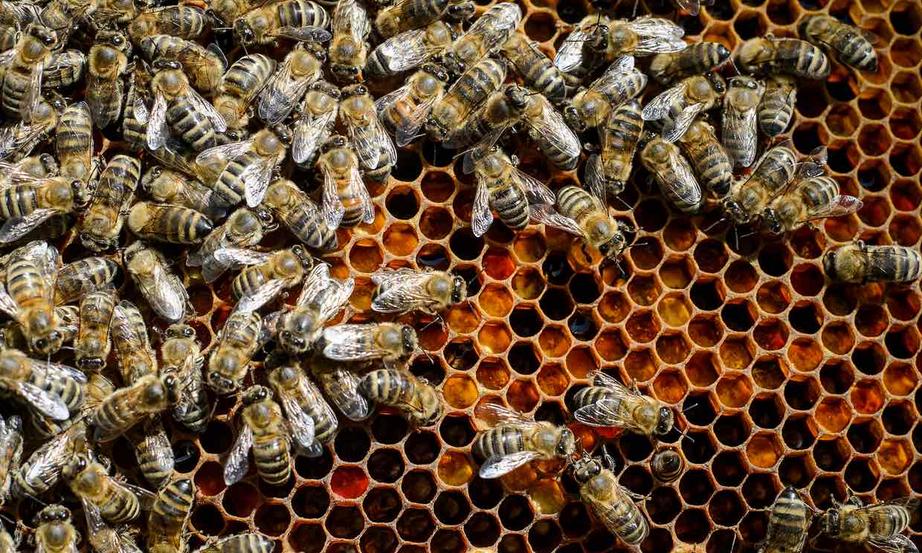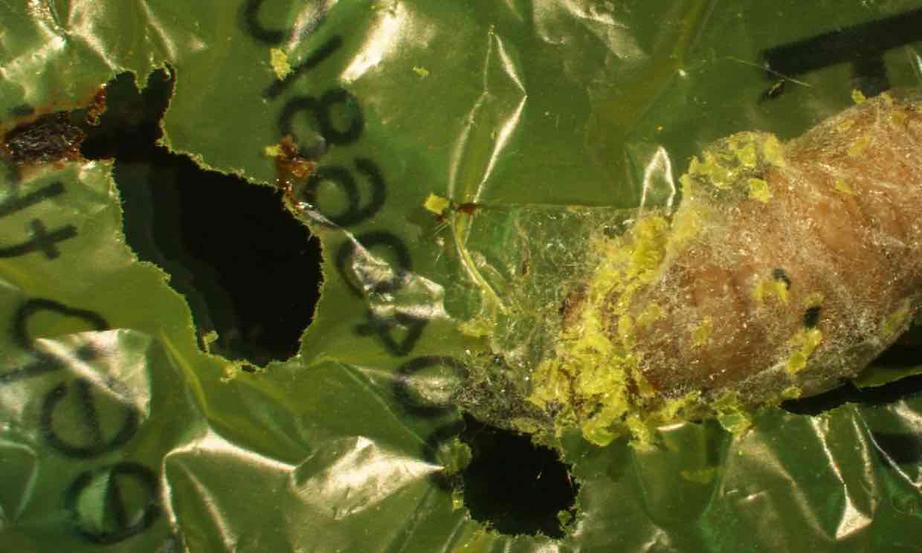Plastic-eating bugs? It’s a great story – but there’s a sting in the tail
Breeding wax moth caterpillars to devour our waste sounds good. But they would attack bee colonies too, and ultimately put crops at risk
Caterpillars that can munch up plastic bags have just been identified, fuelling excited speculation that this could one day eliminate global pollution from plastic waste. The chance discovery, initially made by a scientist and amateur beekeeper whose plastic bag had been eaten through by the moth caterpillars, was reported this week by researchers at Cambridge University and the Spanish National Research Council.
How thoughtful of nature to provide bugs that eat our rubbish. Is this the end of landfill, turtles with plastic-congested stomachs, and trees adorned with tattered ribbons of shopping bags?
Well, it’s never that simple, is it? Attempts to commandeer nature to do our dirty work never seem to turn out as hoped, whether these take the form of planting trees to soak up carbon dioxide, or introducing invasive species for pest control, or using microorganisms to clean up oil spills. Remember the Australian cane toad debacle? The toads were introduced in the 1930s to control crop pests but instead gorged themselves on other local wildlife and spread across the country.
These creatures, the larvae of the greater wax moth (Galleria mellonella), can devour polyethylene, which along with the closely related polypropylene is the main type of plastic found in waste. But you’d need an awful lot of them to make a significant dent on the plastic waste problem. The UK alone discards almost 2m tonnes of this stuff every year. At the rate of consumption reported by the researchers – one worm gets through about two milligrams of plastic a day – you’d need billions of caterpillars eating constantly all year round to deal with that.
Quite aside from how and where you’d farm all these bugs, there’s something about them that news reports have failed to mention. Wax moths, which are found throughout the world, are so-called because they eat wax. Specifically, they love to eat the wax from which bees make their honeycombs – and so they can devastate bee colonies. The two common species of wax moth, of which Galleria mellonella is one, are thought to cause more than £4m worth of damage annually in the United States alone.

‘With bee populations already under severe stress, we might want to think twice about breeding one of their common airborne enemies in huge numbers.’ Photograph: Peter Komka/EPA
With bee populations already under severe stress from pesticides, habitat loss and predators, we might want to think twice about breeding one of their common airborne enemies in huge numbers – even if the intention was to somehow keep them in plastics-processing centres. The idea that if bees disappear then humankind will follow four years later, popularly misattributed to Albert Einstein, might be a touch hyperbolic. But without their pollinating assistance, crop cultivation would be in deep trouble.
Polyethylene sits around in the environment because its molecules are so hard to break down. Ordinary soil microorganisms don’t have the resources for it. These plastics are built up from the hydrocarbon molecules in oil, and ideally we’d turn them back into oil after we had used them, regenerating a valuable substance rather than sacrificing it as waste. Chemists have been working long and hard to do that, using special catalysts to induce the chemical reactions. But it’s tough, and only very recently have they started to see progress. It’s precisely because wax is chemically similar to polyethylene that the wax moth caterpillars can biodegrade it.
A far easier and less hazardous solution to the plastic problem could be found in bacteria, however. After all, it seems you can find bacteria that will eat almost anything. Some happily devour toxic chemicals, such as perchlorate (weed killer); others thrive amid radioactive waste. And indeed last year a team of Japanese scientists identified a bacterium existing in the wild that can feed on another common plastic, polyethylene terephthalate, which is used to make bottles for soft drinks and water.
It’s possible that bacteria might, in fact, be responsible for the plastic-digesting ability of Galleria mellonella larvae. Another wax-eater, the Indian mealmoth, was found in 2014 to house bacteria in its digestive tract that can break down polyethylene. Galleria might prove to have such gut bacteria too.

‘You’d need an awful lot of wax moth caterpillars to make a significant dent on the plastic waste problem. The UK alone discards almost 2m tonnes of the stuff every year.’ Photograph: Federica Bertocchini/Paolo Bombe/PA
Those bacteria could provide the ideal solution. They could be brewed up in fermentation vats that would dissolve plastics without anyone having to contemplate breeding vast wax moth colonies. Alternatively, it might be possible to extract the particular enzymes the caterpillars use and put them to work on their own – a kind of concentrate of gastric juices.
These are the real reasons why the new discovery is promising, and not because we’ll soon be feeding plastic bags to caterpillars. As usual with science, you don’t get the solution on a plate, but have to follow clues with patience and care. It doesn’t make for great headlines. But honestly, the bees would thank you for it.
